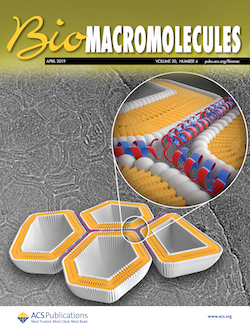James C. S. Ho, Christoph Steininger, Shu Hui Hiew, Min Chul Kim, Erik Reimhult, Ali Miserez, NamJoon Cho, Atul N. Parikh, and Bo Liedberg Biomacromolecules 20, 1709-1718, 2019
Cover

Positive strand RNA viruses replicate in specialized niches called membranous web within the cytoplasm of host cells. These virus replication organelles sequester viral proteins, RNA, and a variety of host factors within a fluid, amorphous matrix of clusters of endoplasmic reticulum (ER) derived vesicles. They are thought to form by the actions of a nonstructural viral protein NS4B, which remodels the ER and produces dense lipid-protein condensates. Here, we used in vitro reconstitution to identify the minimal components and elucidate physical mechanisms driving the web formation. We found that the N-terminal amphipathic domain of NS4B (peptide 4BAH2) and phospholipid vesicles (~100-200 nm in diameter) were sufficient to produce a gel-like, viscoelastic condensate. This condensate coexists with the surrounding aqueous phase and affords rapid exchange of molecules. Together, it recapitulates the essential properties of the virus-induced membranous web. Our data support a novel phase separation mechanism in which phospholipid vesicles provide a supramolecular template spatially organizing multiple self-associating peptides thereby generating programmable multivalency de novo and inducing macroscopic phase separation. DOI: 10.1021/acs.biomac.9b00081